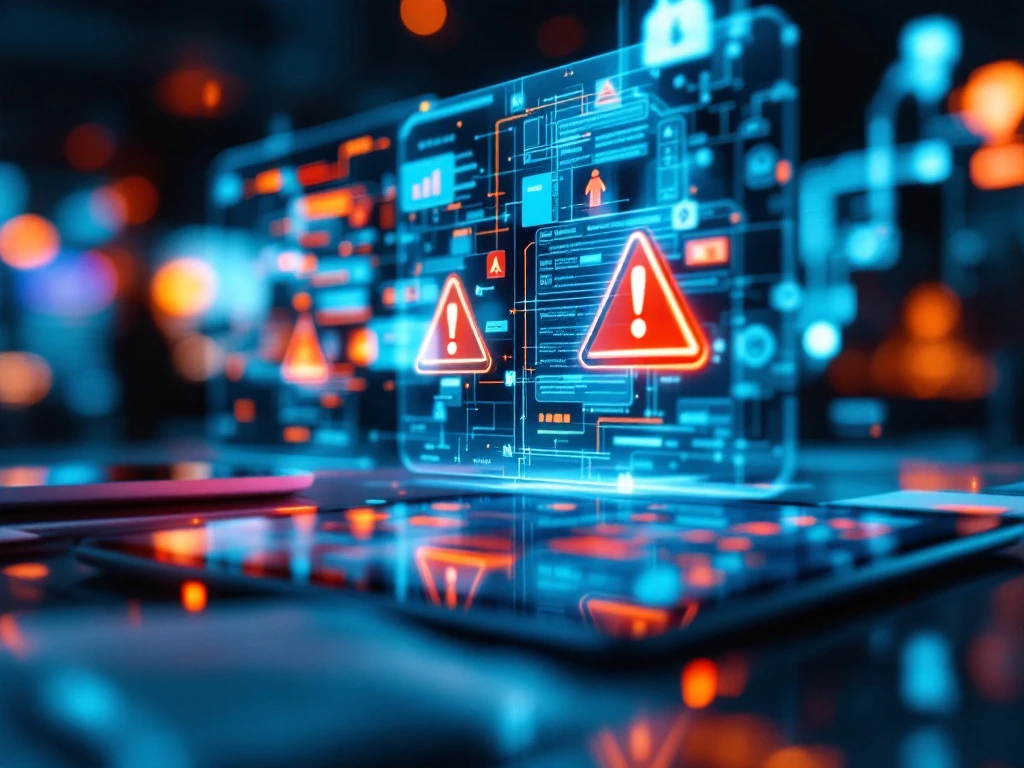Artificial intelligence is reshaping the cybersecurity threat landscape in ways that traditional security approaches simply weren’t designed to handle. While your security team may excel at detecting known attack patterns and responding to familiar threats, AI-powered attacks operate with a sophistication and adaptability that challenges conventional defensive strategies.
The cybersecurity professionals who thrived in yesterday’s threat environment may find themselves underprepared for today’s AI-enhanced attacks. This shift demands not just new tools, but fundamentally different skill sets and approaches to threat detection and response.
This guide examines how AI transforms modern cyber threats, why traditional cybersecurity skills fall short against these evolved attacks, what specific capabilities your security team needs to develop, and how to identify and recruit professionals who can effectively combat AI-enhanced threats. Understanding these changes helps you build a security team capable of defending against both current and emerging AI-powered attacks.
How AI transforms modern cyber threats
Threat actors now use artificial intelligence to create attacks that evolve and adapt in real-time, making them significantly harder to detect and counter than traditional threats. These AI-enhanced attacks operate with a level of sophistication that fundamentally changes how cybersecurity professionals must approach defence.
The key areas where AI transforms cyber threats include:
- AI-powered phishing campaigns – Unlike traditional phishing emails with obvious grammatical errors or generic messaging, AI-generated phishing content appears professionally written and highly personalised, analysing target organisations’ communication patterns and employee hierarchies to create convincing impersonation attempts
- Deepfake-enabled social engineering – Voice synthesis and video manipulation tools allow attackers to impersonate executives, IT administrators, or trusted partners with startling accuracy, targeting both employees and automated systems that rely on voice recognition
- Automated vulnerability discovery – AI-powered reconnaissance tools identify novel attack vectors by analysing system behaviours and network patterns, dramatically reducing the time between a vulnerability’s existence and its discovery by malicious actors
- Adaptive malware – AI-enhanced malware modifies its behaviour based on the environment it encounters, changing attack methods, communication protocols, and code structure to avoid detection while learning from failed attempts
- Real-time evasion techniques – Machine learning algorithms enable continuous adaptation based on what bypasses security filters and what gets blocked, improving success rates automatically without human intervention
These AI-enhanced threats represent a fundamental shift from static, predictable attack patterns to dynamic, learning adversaries that continuously evolve their tactics. Traditional security measures that rely on signature-based detection and rule-based responses struggle against threats specifically designed to circumvent these conventional approaches, creating an urgent need for security teams to develop new defensive capabilities.
Why traditional cybersecurity skills fall short against AI threats
The cybersecurity skills that proved effective against conventional threats often prove inadequate when facing AI-enhanced attacks. This gap exists because traditional security approaches rely on pattern recognition, signature-based detection, and rule-based responses that AI-powered threats are specifically designed to circumvent.
Several critical limitations expose the inadequacy of traditional cybersecurity approaches:
- Pattern-based detection failures – Traditional training focuses on recognising specific indicators of compromise and following established playbooks, but AI threats continuously modify their signatures and behaviours to stay below detection thresholds
- Speed mismatch – Human analysts trained for manual investigation and correlation cannot keep pace with attacks that adapt and evolve within seconds or minutes of encountering defensive measures
- Machine learning literacy gaps – Most traditional training programmes don’t include essential concepts like understanding how ML models work, their limitations, and how they can be manipulated or evaded
- Statistical analysis deficiencies – Many experienced professionals lack the skills needed to interpret probabilistic outputs, understand false positive rates, model confidence levels, and algorithmic bias
- Rigid incident response procedures – Traditional procedures assume predictable attack patterns and consistent forensic evidence, but AI-enhanced attacks create incidents that evolve during response and may leave artificially generated or deliberately misleading evidence
- Siloed operational approaches – Traditional security roles often operated independently, but defending against AI threats requires cross-functional collaboration between security professionals, data scientists, and AI specialists
These limitations create significant blind spots in organisational defences, leaving security teams reactive rather than proactive against AI-enhanced threats. The fundamental mismatch between static, rule-based traditional approaches and dynamic, adaptive AI threats necessitates a complete rethinking of cybersecurity skill requirements and operational methodologies.
What skills your security team needs for AI threat detection
Building an effective defence against AI-enhanced threats requires security professionals who combine traditional cybersecurity knowledge with new technical competencies and analytical capabilities. These hybrid skill sets enable teams to understand, detect, and respond to threats that conventional security approaches cannot handle.
Essential skills for modern AI threat detection include:
- Data science fundamentals – Understanding statistical analysis, data visualisation, and basic machine learning concepts to work effectively with AI-powered security tools and interpret their probabilistic outputs rather than binary alerts
- AI model interpretation capabilities – Comprehending how machine learning systems reach conclusions and identifying potential weaknesses or blind spots, including concepts like feature importance, model bias, and adversarial examples
- Behavioural analysis expertise – Proficiency in user and entity behaviour analytics, network behaviour analysis, and anomaly identification that may indicate AI-powered attacks despite changing technical signatures
- Advanced automation and scripting – Python proficiency for data analysis, automation frameworks for response orchestration, and API integration skills for connecting disparate security tools to respond at AI-threat speeds
- Evolved threat modelling – Understanding how AI changes traditional attack vectors and developing models that account for adaptive adversaries, automated reconnaissance, and AI-powered social engineering
- Cross-functional collaboration – Ability to work effectively with data scientists and AI researchers while communicating security requirements to technical specialists and translating complex AI concepts for business stakeholders
- Continuous learning mindsets – Skills in self-directed learning, staying current with AI research, and adapting approaches as new threats and defensive techniques emerge in this rapidly evolving landscape
- Enhanced digital forensics – Capabilities to handle AI-generated evidence, identify AI-generated content, analyse machine learning model outputs, and investigate incidents involving adaptive malware or AI-powered social engineering
These skills represent a fundamental evolution in cybersecurity expertise, moving beyond traditional reactive approaches to proactive, analytically-driven defence strategies. Security professionals equipped with these capabilities can not only detect and respond to current AI threats but also anticipate and prepare for emerging attack vectors as AI technology continues advancing.
How to identify and recruit AI-savvy cybersecurity professionals
Finding cybersecurity professionals with AI expertise requires a different approach to sourcing, evaluation, and hiring than traditional security recruitment. The talent pool for these hybrid roles is limited, and competition is intense across industries seeking similar capabilities.
Effective recruitment strategies for AI-savvy security professionals include:
- Expanded sourcing beyond traditional pools – Looking at data science, academic research, and software development backgrounds for professionals who may not have traditional security job titles but possess relevant ML and analytical experience
- Portfolio-focused evaluation – Prioritising practical demonstrations of machine learning projects, data analysis work, GitHub repositories, published research, and conference presentations over traditional qualification screening
- Hybrid technical interviews – Assessing both security knowledge and AI competency through questions about ML concepts, statistical analysis, and practical application of AI techniques to security problems
- Practical assessment techniques – Providing datasets or scenarios requiring both security analysis and data science skills to reveal problem-solving approaches and ability to bridge AI techniques with security applications
- Competitive positioning awareness – Understanding that candidates often have options across cybersecurity and broader technology roles, with higher compensation expectations and strong preferences for continued learning opportunities
- Cultural fit assessment – Identifying candidates who thrive in collaborative environments, work effectively with cross-functional teams, and demonstrate intellectual curiosity about emerging technologies and adaptability to rapid change
- Communication capability evaluation – Ensuring candidates can explain complex technical concepts to diverse audiences and translate between technical and business perspectives effectively
- Long-term relationship building – Developing connections with educational institutions, research organisations, and professional communities to create pipelines of AI-capable security talent often not visible through traditional recruitment channels
Success in recruiting AI-savvy cybersecurity professionals requires recognising that these candidates represent a new breed of security professional who combines traditional security thinking with advanced analytical capabilities. The investment in finding and developing these hybrid skill sets creates significant competitive advantages in threat detection, response capabilities, and preparation for future attack vectors that will increasingly define the cybersecurity landscape.
The cybersecurity landscape continues evolving as AI transforms both threats and defences. Building a security team capable of handling these challenges requires professionals who combine traditional security expertise with new analytical and technical capabilities. Success depends on recognising that effective AI threat defence requires different skills, sourcing strategies, and team structures than conventional cybersecurity approaches.
The investment in AI-capable security talent pays dividends in improved threat detection, faster response times, and better preparation for emerging attack vectors. Organisations that build these capabilities now position themselves to defend effectively against the AI-enhanced threats that will define the future of cybersecurity.
Whether you’re looking to hire individual specialists or build comprehensive AI-capable security teams, we understand the unique challenges of finding professionals who can bridge cybersecurity and AI domains. Our global network includes candidates with the hybrid skill sets essential for modern threat defence, and we can help you identify and recruit the talent needed to secure your organisation against AI-enhanced threats.
















